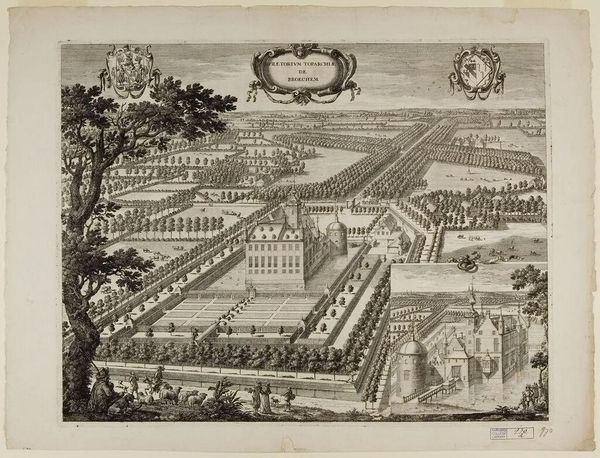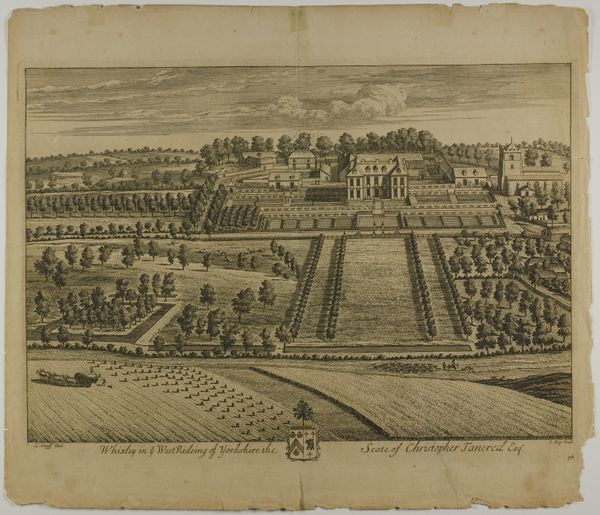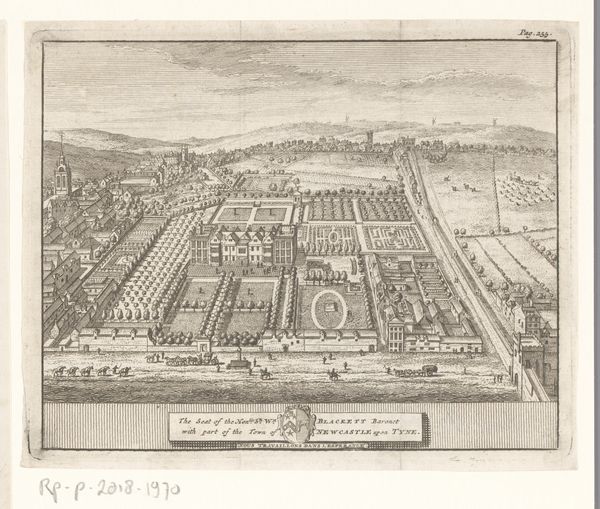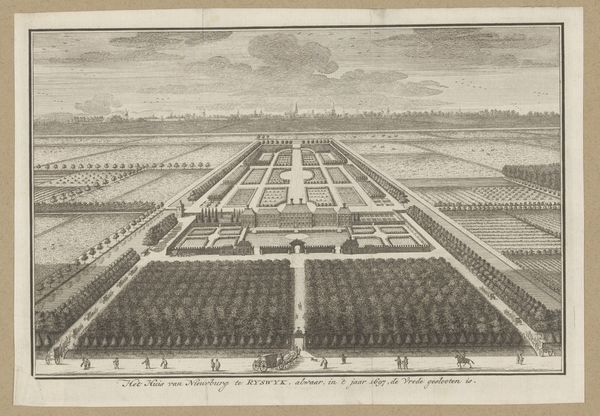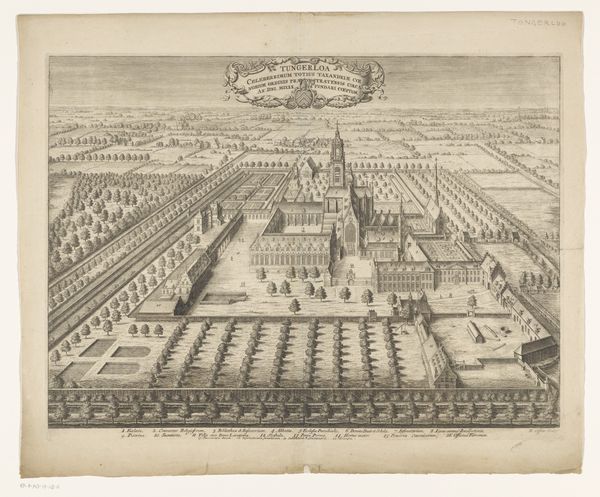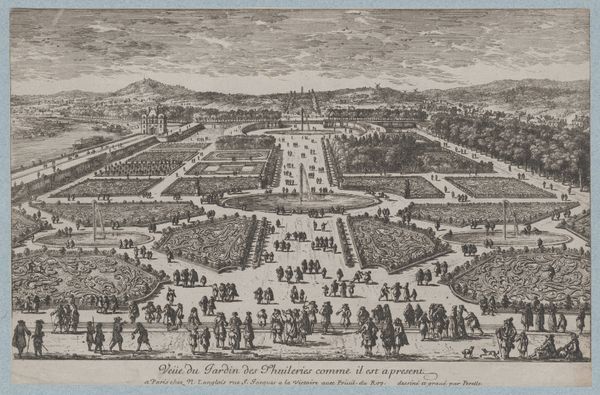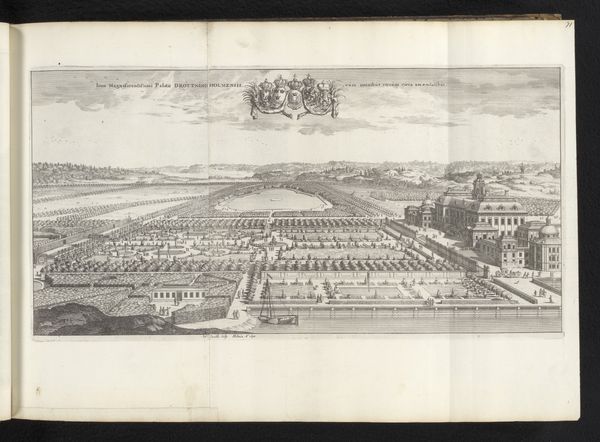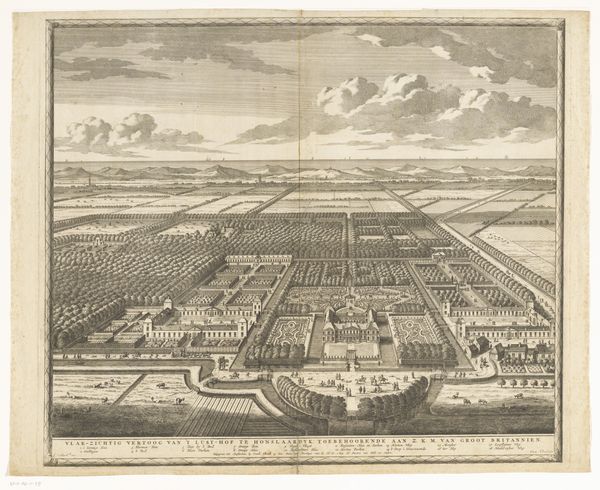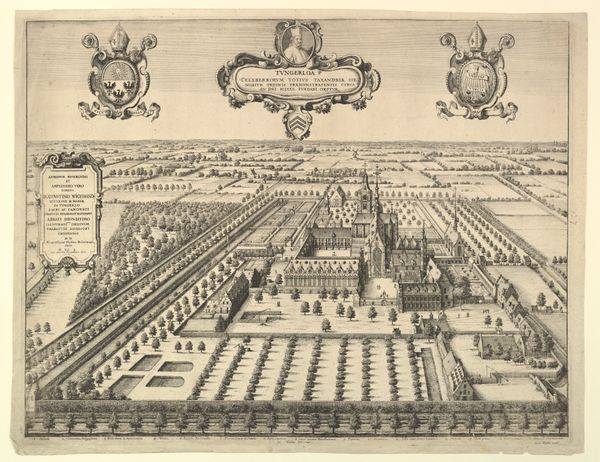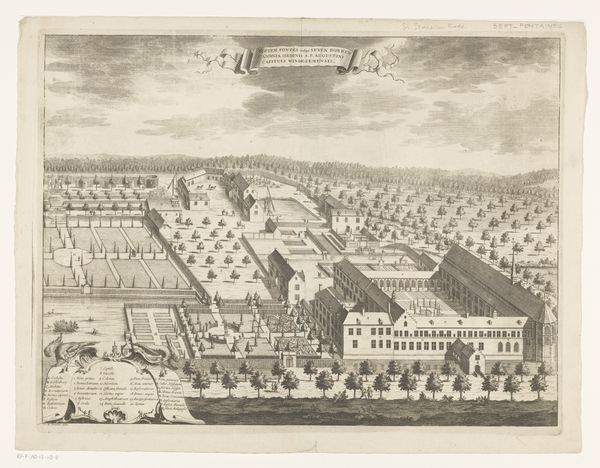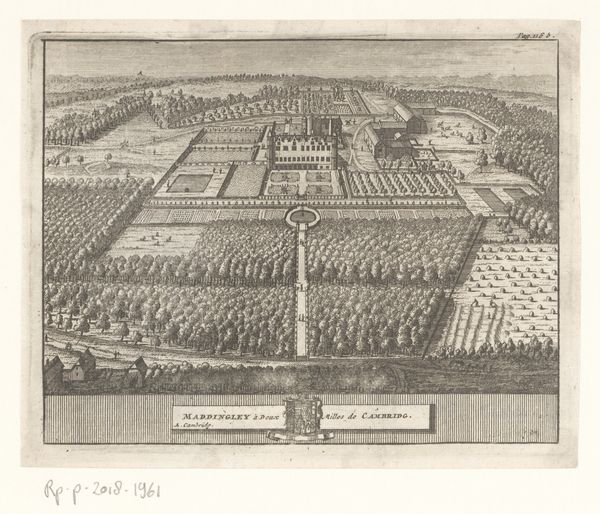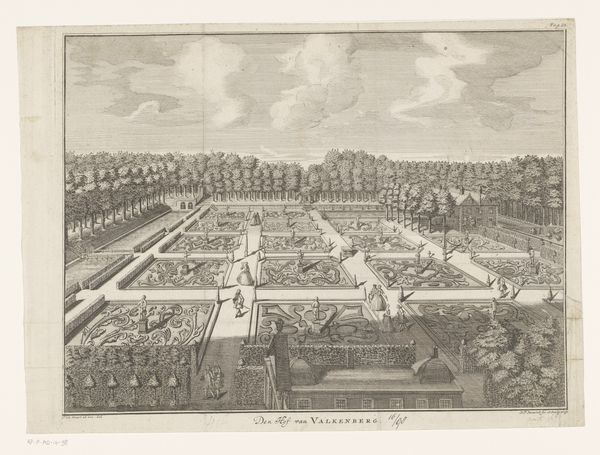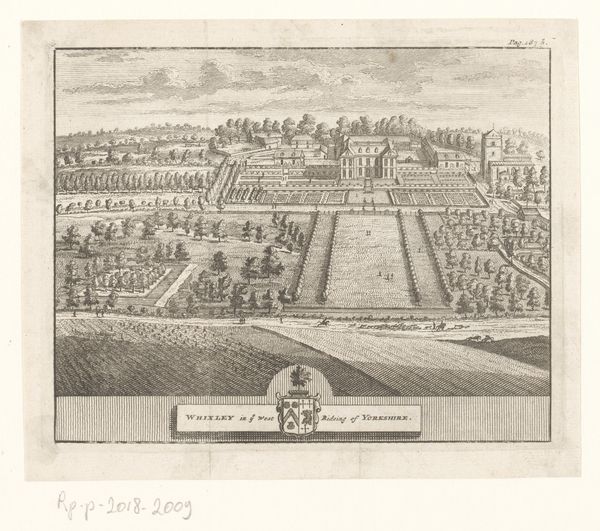
print, engraving
#
baroque
# print
#
pen illustration
#
pen sketch
#
old engraving style
#
landscape
#
pen-ink sketch
#
cityscape
#
engraving
Dimensions: height 385 mm, width 494 mm
Copyright: Rijks Museum: Open Domain
Editor: Here we have Adam Perelle's "View of the Estate of Broechem Castle," an engraving dating between 1669 and 1695. It feels incredibly ordered and hierarchical, doesn't it? The rigid lines of the landscape, the clear separation between the castle and the common land. How do you interpret the message of a piece like this? Curator: That feeling of order is precisely what strikes me. Think about the Baroque period—a time of consolidating power for both the aristocracy and the burgeoning merchant class. These landscapes weren't just pretty pictures; they were declarations of ownership, of control over land and, by extension, the people who lived on it. Does the perspective itself tell us something about who this image was intended for? Editor: Definitely. That elevated viewpoint seems to place the viewer in a position of power, looking *down* on the land. But, look at the bottom, there are these tiny figures—peasants, probably—almost like afterthoughts. Curator: Exactly! Consider their positioning relative to the grand architecture and manicured gardens. It subtly reinforces a social hierarchy, where their labor and lives are literally overshadowed. Also, let’s not forget about the formalized gardens – how might those reflect not just wealth but a certain *philosophy* of domination of the natural world? Editor: I see what you mean. The art isn’t just reflecting society, it’s actively participating in the power dynamics of the time. So, it’s beautiful, but also… loaded. Curator: Precisely. It asks us to confront uncomfortable questions about privilege, exploitation, and the ways landscapes can be both celebrated and weaponized. By considering whose stories are amplified and whose are silenced in such depictions, we get a richer, more critical understanding of the artwork. Editor: It's fascinating to think about art not as just something to admire, but as a piece of historical evidence, revealing social and political truths about the time. Curator: Precisely, art is never neutral, and this discussion demonstrates the power of historical context to transform how we view a work!
Comments
No comments
Be the first to comment and join the conversation on the ultimate creative platform.
